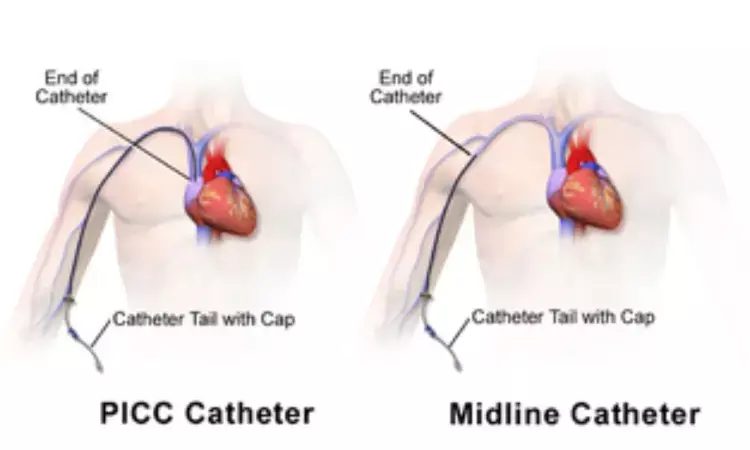- Home
- Medical news & Guidelines
- Anesthesiology
- Cardiology and CTVS
- Critical Care
- Dentistry
- Dermatology
- Diabetes and Endocrinology
- ENT
- Gastroenterology
- Medicine
- Nephrology
- Neurology
- Obstretics-Gynaecology
- Oncology
- Ophthalmology
- Orthopaedics
- Pediatrics-Neonatology
- Psychiatry
- Pulmonology
- Radiology
- Surgery
- Urology
- Laboratory Medicine
- Diet
- Nursing
- Paramedical
- Physiotherapy
- Health news
- Fact Check
- Bone Health Fact Check
- Brain Health Fact Check
- Cancer Related Fact Check
- Child Care Fact Check
- Dental and oral health fact check
- Diabetes and metabolic health fact check
- Diet and Nutrition Fact Check
- Eye and ENT Care Fact Check
- Fitness fact check
- Gut health fact check
- Heart health fact check
- Kidney health fact check
- Medical education fact check
- Men's health fact check
- Respiratory fact check
- Skin and hair care fact check
- Vaccine and Immunization fact check
- Women's health fact check
- AYUSH
- State News
- Andaman and Nicobar Islands
- Andhra Pradesh
- Arunachal Pradesh
- Assam
- Bihar
- Chandigarh
- Chattisgarh
- Dadra and Nagar Haveli
- Daman and Diu
- Delhi
- Goa
- Gujarat
- Haryana
- Himachal Pradesh
- Jammu & Kashmir
- Jharkhand
- Karnataka
- Kerala
- Ladakh
- Lakshadweep
- Madhya Pradesh
- Maharashtra
- Manipur
- Meghalaya
- Mizoram
- Nagaland
- Odisha
- Puducherry
- Punjab
- Rajasthan
- Sikkim
- Tamil Nadu
- Telangana
- Tripura
- Uttar Pradesh
- Uttrakhand
- West Bengal
- Medical Education
- Industry
Electronic decision support tool ensures appropriate midline catheter and single-lumen PICC insertion

USA: Inappropriate peripherally inserted central catheters (PICCs) use, including multi-lumen PICCs, is known to raise the risk of patient complications. A recent study, published in the Journal of Hospital Medicine revealed that an electronic clinical decision support tool led to higher rates of midline and single-lumen PICC placement.
Previous studies have shown that both midline catheters and single-lumen PICCs have lower complication rates (e.g. venous thromboembolism [VTE] and central line–associated bloodstream infection) as compared to multi-lumen PICCs. Despite the known risks of peripherally inserted central catheters, there is substantial interhospital variability in their use.
Tyler J. Anstett, University of Colorado School of Medicine, Aurora, Colorado, USA, and colleagues aimed to examine the effects of an embedded electronic health record (EHR) order for increasing the use of midline catheters over PICCs when appropriate and decreasing PICC lumens when a PICC is necessary.
For this purpose, the researchers performed an observational trial at a single academic medical centre for 3 years to examine the effects of an embedded EHR order, which guided providers to select the appropriate catheter based on indication and expected duration of use. In the 11-month preintervention period, about 2300 catheters were placed and nearly 6500 were placed in the 25-month postintervention period.
The quasi-experimental, interrupted time series designed study included hospitalized adults who received a midline or PICC during clinical care.
The study led to the following findings:
- During the study period, a total of 8758 midline and PICCs were inserted.
- A statistically significant increase in the insertion of midline catheters was observed during the intervention.
- In parallel, single-lumen PICC insertion as a proportion of all PICCs also increased after the intervention.
- Results were consistent across multiple disciplines, including internal medicine, surgery, and intensive care.
- After considering the hospital census, total PICC and midline utilization rates and rates of complications did not change over time.
- An increase in catheter exchanges from less to more invasive devices occurred.
Results were consistent across multiple service specialities (e.g., surgery, internal medicine, intensive care), but oncology use didn't change. Line placement rates and complication rates were unchanged for all PICCs plus midlines.
The findings indicate that a fairly simple intervention can lead to the more appropriate use of single-lumen and midline PICCs, although its findings might not apply to oncology patients who often need central access for multiple infusions.
"Our findings revealed that the implementation of electronic decision support to inform the appropriate use of catheters led to a more appropriate insertion of catheters and single-lumen peripherally inserted central catheter," the researchers wrote.
"We welcome the dissemination of this single, effective intervention to examine efficacy in other hospital settings," they concluded.
Reference:
Bredenberg, E., Atwater, R., Grimm, E., Chopra, V., Shamburger, C. D., & Anstett, T. J. (2023). Promoting appropriate midline catheter and PICC placement through implementation of an EHR-based clinical decision support tool: An interrupted time-series analysis. Journal of Hospital Medicine, 18(6), 483-490. https://doi.org/10.1002/jhm.13093
Dr Kamal Kant Kohli-MBBS, DTCD- a chest specialist with more than 30 years of practice and a flair for writing clinical articles, Dr Kamal Kant Kohli joined Medical Dialogues as a Chief Editor of Medical News. Besides writing articles, as an editor, he proofreads and verifies all the medical content published on Medical Dialogues including those coming from journals, studies,medical conferences,guidelines etc. Email: drkohli@medicaldialogues.in. Contact no. 011-43720751


